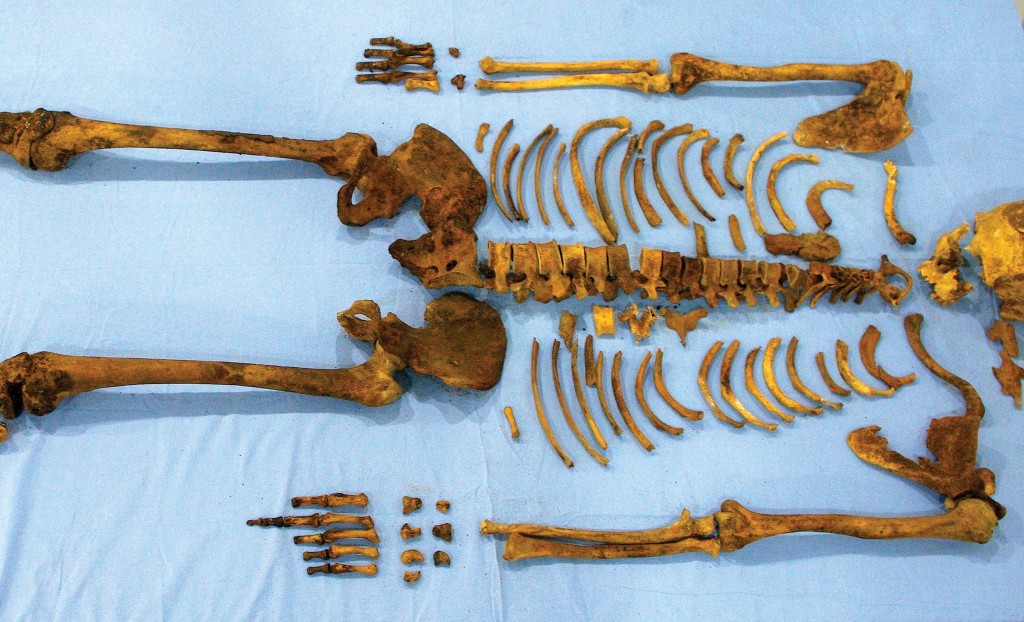
The skeleton of the pharaoh Woseribre Senebkay lies on a table. The king’s body was originally mummified, but robbers ripped the body apart.
Pharaoh Senebkay (c.1650–1600 BC) is the earliest Egyptian king known to have died in battle. The king’s tomb was found last year at Abydos by a team from the University of Pennsylvania Museum, led by Dr Josef Wegner (see CWA 64), along with seven burial chambers belonging to other kings of the Second Intermediate Period – one of the most obscure and short-lived dynasties of Ancient Egypt.
Osteoanalysis on Senebkay’s skeleton showed signs of 18 wounds that penetrated to the bone – cuts to the feet, ankles, knees, hands, and lower back – and three large wounds to the skull which maintain the distinctive size and shape of a Second Intermediate Period battle axe. The number and placement of the attacks suggest he died in battle while riding a horse. ‘His assailants first cut his lower back, ankles and feet to bring him to the ground and then finished him with axe blows to the skull,’ Wegner said.
Analysis of the muscle attachments on his leg and pelvis bones indicate he was a proficient horse-rider. Wegner explained, ‘Although use of horseback riding in warfare was not common until after the Bronze Age, the Egyptians appear to have been mastering the use of horses during the Second Intermediate Period. Horseback riding may have played a growing role in military movements during this era, even before the full advent of chariot technology in Egypt, which occurred slightly later, at the beginning of Egypt’s New Kingdom (c.1550 BC).’
Senebkay, who was about 35 to 40 years old when he was killed, had perished some time before he was eventually buried. It is possible that his body had to be brought some distance back to Abydos, though where that faraway battlefield was we do not know. ‘Forensic analysis has provided some new answers about the life and death of this ancient Egyptian king,’ Dr Wegner told CWA, ‘while raising a host of new questions about both Senebkay, and the Second Intermediate Period.’
